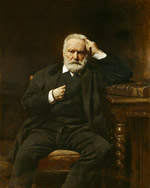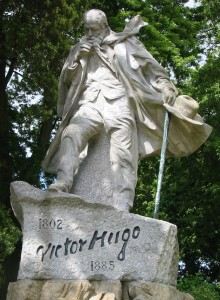Hugoids – Some Victor Hugo Factoids
 Victor Hugo is well known locally as a world renowned literary genuis and for his exile from his beloved France spent in his second home, Guernsey. However we’ve gathered together some rather less known factoids – or Hugoids as we like to call them.
Victor Hugo is well known locally as a world renowned literary genuis and for his exile from his beloved France spent in his second home, Guernsey. However we’ve gathered together some rather less known factoids – or Hugoids as we like to call them.
THE MAN
|
|
Whilst writing Les Misérables Hugo developed an unusual technique to cure writers block – he had his valet hide his clothes and wrote naked so he could not wander from the task. He worked on Les Misérables for many years, beginning work on it in the 1840s but not finishing it until 1862, so how much of that time he spent naked we will never know. |
|
|
Hugo was a foot fetishist. And he wasn’t alone in the world of great writers in being fond of feet – Dostoevsky, Goethe, George du Maurier, and F. Scott Fitzgerald were also podophiles (we’ve had to be careful with the spelling there). |
|
|
Hugo claimed he made love to his wife nine times on their wedding night. He recorded this amzing feat in his diary – which he kept compulsively –throughout his life. |









You must be logged in to post a comment.